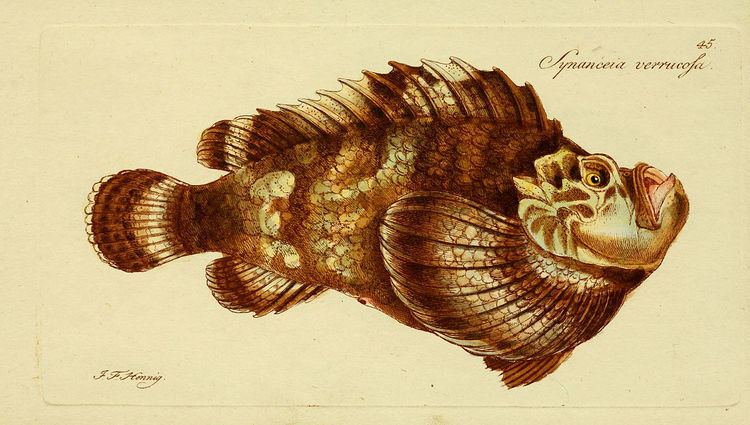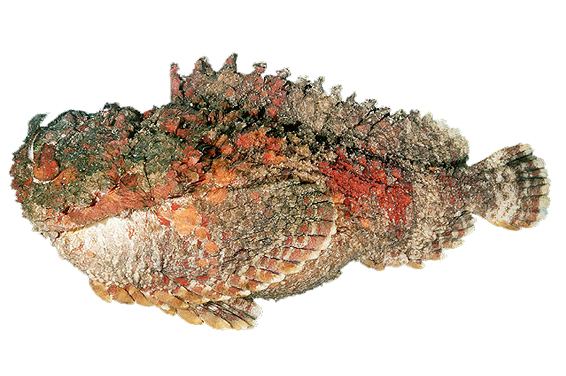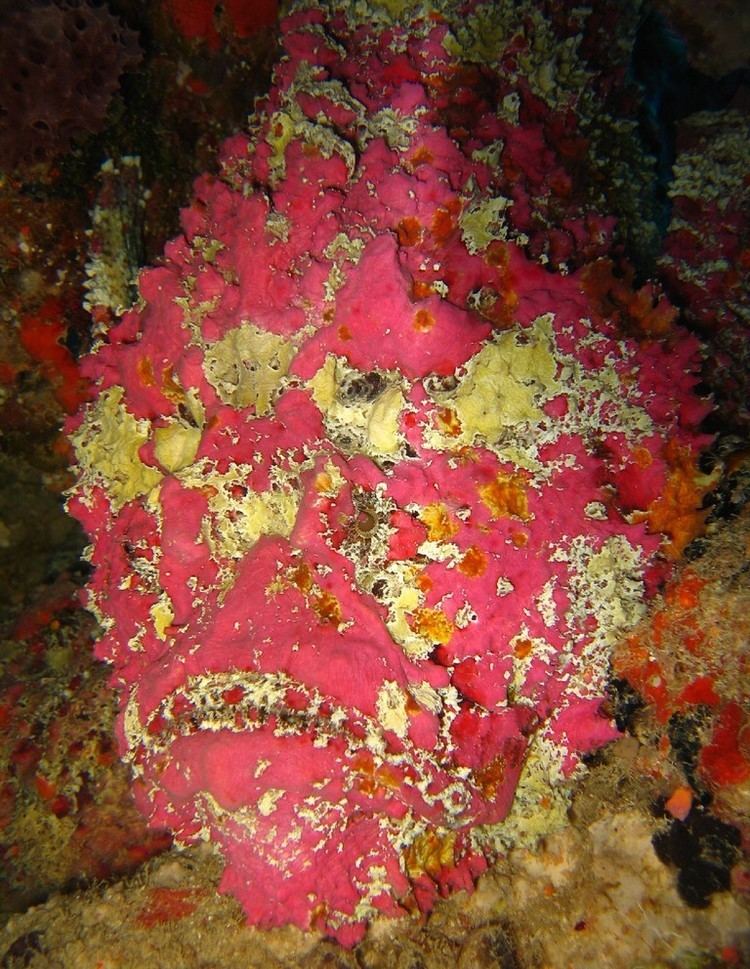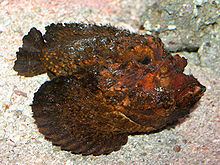Kingdom Animalia Scientific name Synanceia Family Synanceiidae Rank Genus | Order Scorpaeniformes Class Actinopterygii Higher classification Scorpionfish Phylum Chordata | |
 | ||
Lower classifications Synanceia verrucosa, Synanceia horrida, Synanceia nana | ||
Stonefish synanceia verrucosa
Synanceia is a genus of fish of the family Synanceiidae, the stonefishes, whose members are venomous, dangerous, and even fatal to humans. It is one of the most venomous fish known. They are found in the coastal regions of the Indo-Pacific.
Contents
- Stonefish synanceia verrucosa
- Habitat and characteristics
- Classification
- Species
- Treatment of envenomation
- Stonefish stings in Australia
- Number of incidents
- As food
- References

Habitat and characteristics

Synanceia are primarily marine, though some species are known to live in rivers. Its species have potent neurotoxins secreted from glands at the base of their needle-like dorsal fin spines which stick up when disturbed or threatened. The vernacular name of the species, the stonefish, derives from the stonefish's ability to camouflage itself with a grey and mottled color similar to the color of a stone. Swimmers may not notice them, and may inadvertently step on them, triggering a sting. When the stonefish is disturbed, it may inject an amount of venom proportional to the amount of pressure applied to it.
Classification

The type species of the genus is Synanceia verrucosa, which includes the species Synanceia horrida that Linnaeus described as Scorpaena. The authors of Synanceia are Marcus Elieser Bloch and Johann Gottlob Schneider in the latter's republication of Systema Ichthyologiae iconibus cx illustratum (Illustrated catalog of Fishes), in 1801. The description was accompanied by an illustration by J. F. Hennig. The misspelling Synanceja is regarded as a synonym for this genus.
Species
The following is a list of species in the genus:

Treatment of envenomation

Stonefish stings are both potentially lethal and extremely painful. The two most recommended treatments include the application of heat to the affected area and antivenom. People have used hot water (at a temperature no higher than 45 °C (113 °F)) applied to the injured area which has been found to destroy stonefish venom, and causes minimal discomfort to the victim. For more extreme cases, antivenom has been used. Vinegar can be found on some Australian beaches where there are frequent cases of people stepping on these fish, as the vinegar is said to lessen the pain.
Stonefish stings in Australia

Stonefish stings in Australia can cause envenomation and death if not treated. The stonefish is one of the most venomous fish in the world and when stepped on by a human forces venom into the foot. Most stonefish stings occur as a result of stepping on the creature while it is less common for the fish to sting when it is picked up. Stonefish stings can occur on the beach, not just in the water, since stonefish can survive out of the water for up to 24 hours. They often cannot be easily seen as they look similar to rocks or coral. Stonefish antivenom is the second-most administered in Australia.
Aborigines know of the venom of the stonefish and have corroborees which involve re-enacting death from someone who trod on the fish. The Aborigines of Northern Australia and the Great Barrier Reef have different ways of preparing the fish for eating to avoid poisoning.
After stonefish envenomation, the amount of anti-venom given depends on the number of puncture wounds from the stonefish spines.
Number of incidents
There were 25 cases of the use of antivenom for stonefish reported to Commonwealth Serum Laboratories for a one-year period between July 1989 and June 1990, with most from Queensland and four from the Northern Territory. There were 14 calls to the Queensland Poisons Information System in 2008 regarding stonefish poison.
As food
Despite their fearsome reputation, Synanceia are edible to humans if prepared properly as the protein-based venom quickly breaks down if heated, while raw stonefish served as part of sushi is rendered harmless simply by removing the dorsal fins, which are the main source of venom. The fish are considered a delicacy in many parts of Asia, including south Japan, south Fujian and Guangdong in China, and Hong Kong. In the Hokkien-speaking area, they are considered delicacies and good for health. The meat of Synanceia is white, dense and sweet, and the skin is also edible. They are usually cooked with ginger into a clear soup, and sometimes served raw as sushi or sashimi.
